Talking transit with Streetsblog
July 28, 2011
 From “people powered transportation” to the Westside subway, I tackled a wide-ranging series of questions this week from readers of Streetsblog Los Angeles on our region’s pressing transit challenges—past, present and future.
From “people powered transportation” to the Westside subway, I tackled a wide-ranging series of questions this week from readers of Streetsblog Los Angeles on our region’s pressing transit challenges—past, present and future.
Among many other things, I called for a break with “dated, auto-centric models” in favor of bicycling, walking and public transportation. I explained why I believe it is imperative that we finally bring mass transit to the Westside in the form of projects such as the Exposition Light Rail and the Westside Subway Extension. And I offered my views on the tensions that have erupted between Beverly Hills and Metro on the subway’s route, stressing that decisions will be based on evidence and science, not emotion.
Looking farther down the road, I talked about the possibility of someday building a 405 rail corridor between West Los Angeles and the San Fernando Valley and extending the Red Line subway through West Hollywood.
For the full text of my two-part Q & A with Streetsblog, you can click here for the first segment on regional transit needs and here for the second one on cycling and pedestrian issues. Feel free to let me know what you think at [email protected]
Posted 7/28/11
A helping hand with the phone
July 28, 2011
For folks who have trouble using a standard telephone, help is available–and it’s free. The California Telephone Access Program provides specialized telephone equipment to residents who have difficulty hearing, seeing, moving, speaking or remembering.
When the program was established in 1979, it only provided Teletypewriter machines for the deaf. It has since evolved, and now serves more than 500,000 people with a broad range of disabilities. It provides more than 60 kinds of equipment, including Braille devices, hands-free phones, phones with oversized numbers and phones that amplify outgoing or incoming speech. What’s more, a companion program, the California Relay Service helps deaf and speech-disabled callers by reading teletype aloud and putting speech into readable text.
The services are part of the Deaf and Disabled Telecommunications Program (DDTP), which is administered by the California Public Utilities Commission, mandated by the state legislature, and paid for by a 0.5% surcharge on all telephone bills.
According to program officials, one in three people will have some degree of hearing loss by age 60. More than 3 million Californians now have disabilities that make using a normal telephone difficult or impossible. With the first round of baby boomers turning 65 this year, even more people stand to benefit from the service.
They won’t have to jump through a lot of hoops to sign up, either.
“It’s very simple,” said Elena Heredia, field operations supervisor for DDTP. “A lot of people, when they learn about a government program, think ‘Oh, there has got to be a long list of info I have to provide.’ This is just one form.”
To qualify for assistance you must be a California resident, have phone service (cell phones count) and have a doctor certify the disability or impediment. The program is available regardless of age or income, and there is no need to re-register once you have been accepted. Application forms are available via DDTP’s website or by calling (800) 806-1191. If using a teletype device, call (800) 889-3974.
7/28/11
An ocean of appreciation
July 27, 2011
Take a break from the beach to honor the ocean this weekend.
The Santa Monica Pier Aquarium is hosting the Ocean Appreciation Celebration, an annual event that makes marine education and conservation fun for all ages.
The world’s oceans cover about 71% of the Earth’s surface–more than 139 million square miles. That’s a lot of territory for one weekend, so the focus will be on our ocean “backyard”–Santa Monica Bay. Explore the Bay’s four habitats: the sandy bottom, the kelp forest, the rocky shore and the open ocean.
These habitats and their resident flora and fauna are brought to life with games, arts & crafts, music, photography, and naturalists’ presentations. Scavenger hunts, face painting, and an ocean trivia contest with prizes are all part of the fun.
On Saturday at 1:30 p.m. scuba diver and aquarium volunteer Alexander Jaffe will offer a show-and-tell session on his underwater adventures. At 1:30 p.m. Sunday, director Douglas Rowell screens a sneak preview of his upcoming film based on the children’s book “All the Way to the Ocean,” by Joel Harper. After the screening, Rowell will lead a discussion on how humans are affecting the marine environment.
The Santa Monica Pier Aquarium is home to more than 100 species of native marine animals and plants. It is the public education center of Heal the Bay, a nonprofit organization dedicated to keeping the coastal waters and watersheds of Southern California safe, healthy and clean.
The celebration takes place on Saturday, July 30, and Sunday, July 31, from 12:30 p.m. to 6 p.m. The event is free with aquarium admission, which is $3 for adults and free for kids ages 12 and under. The aquarium is located at 1600 Ocean Front Walk, at ocean level below the carousel on the Santa Monica Pier.
Posted 7/27/11
The thinking person’s film fest
July 27, 2011
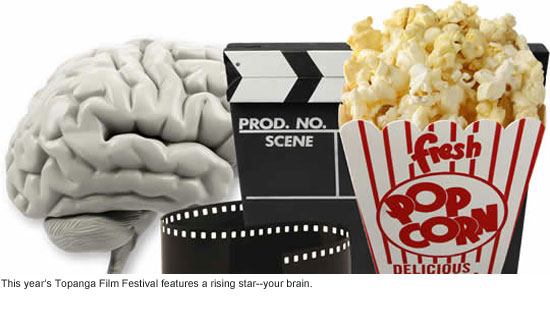 Plot twists set in motion by the viewer’s brainwaves? Neurocinema? MRIs that can trace an actor’s empathy?
Plot twists set in motion by the viewer’s brainwaves? Neurocinema? MRIs that can trace an actor’s empathy?
If this weekend’s 7th Annual Topanga Film Festival doesn’t sound like your ordinary day at the movies, it’s not just because Topanga Canyon is known for doing things differently.
The film festival, which opens Thursday, will bring big names to rustic settings, as always. Event director and co-founder Urs Baur says, in fact, that this year is the biggest ever, with about 50 films that will be shown over four days, including short film and feature documentary competitions judged by such respected names as director Randall Einhorn and actors William H. Macy, Felicity Huffman and Elijah Wood.
But it will also carry a theme you don’t see at every film festival: neuroscience. The backstory? “It all started when I lost my job,” says volunteer communications director L.G. Taylor:
A 30-year-old novelist and actress, Taylor says she had been earning her paycheck at an acting studio until the recession forced them to lay her off. When a friend steered her to a temp agency, she hoped for a studio gig, hoping it might bring her big break into show business. Instead, she was sent to the Institute of Neurosurgical Innovation, a research foundation started by Dr. Amir Vokshoor, a Westside neurosurgeon, after Alzheimer’s Disease claimed his father’s life.
For the next six weeks, Taylor says, she was immersed in brain research, a field that, she discovered, has increasingly been applied to film marketing.
“When the position ended, I had this passion,” she remembers. “But I was left with ‘Now what?’”
Fortunately, she says, the festival was approaching. A suggestion that the organization include a single panel discussion on creativity and neuroscience morphed into a decision to build this year’s event around the intersection of art and the brain.
“This is really an interesting time in the movie industry,” says Baur, a Topanga local who works as a branding consultant when he’s not organizing the festival or running its new year-round presence, the Topanga Film Institute.
“Content creation is changing, business models are changing. Hollywood has begun employing neuromarketing in its advertising. It’s no longer enough to ask what you think about a movie. It’s become more interesting for Hollywood to measure what you feel.”
This year’s event will feature a new, cutting-edge screening in which special headsets will let viewers determine the plot of a film by the state of their brain waves. Panels on filmmaking and creativity will feature not only Hollywood A-listers, but also a surprisingly renowned cross-section of scientific rock stars.
One panel on directing will include California Institute of Technology’s Steven Quartz, whose groundbreaking brain research is helping to shape the next generation of movie trailers. Another session, on acting, will feature both Oscar-winner Melissa Leo and Jonas Kaplan of USC’s Brain and Creativity Institute, whose research uses functional MRIs to search for the roots of empathy and self-awareness.
“It’s pretty revolutionary,” says Vokshoor of the Institute for Neurosurgical Innovation, who will also participate as a panelist. “We’re in a period right now where we are really speaking collaboratively across various disciplines.”
Vokshoor says his Institute focuses on such collaborative research because “from quantum mechanics and basic neuroscience to metaphysics, religion and the creative arts, we’re all trying to answer some of the same kinds of questions.”
“If I were to name one great life goal for neuroscience research, it would probably be: Where is the molecule for consciousness, for inspiration, located?” says Vokshoor. “I’m not sure we’ll find the answers, but these kinds of collaborations are exciting, because they say, ‘There’s something here.’”
The Topanga Film Festival runs from July 28-31. For tickets and more information, click here.
Posted 7/28/11
State prisoners, meet your minders
July 27, 2011
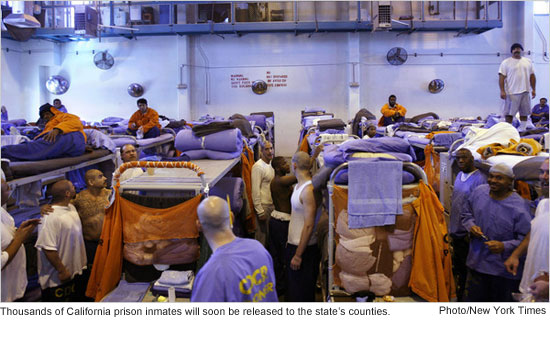 After a rare public tussle between two powerful local criminal justice agencies, the Board of Supervisors has unanimously picked the Los Angeles County Probation Department to oversee thousands of freed California prisoners who, as part of the governor’s budget plan, will no longer be charges of the state.
After a rare public tussle between two powerful local criminal justice agencies, the Board of Supervisors has unanimously picked the Los Angeles County Probation Department to oversee thousands of freed California prisoners who, as part of the governor’s budget plan, will no longer be charges of the state.
Chief Probation Officer Donald Blevins was given the nod over Sheriff Lee Baca, who had forcefully argued that his department was better suited to monitor an estimated 8,000 inmates who’ll be heading back to the streets of Los Angeles County during a nine-month period.
Critics of Baca’s proposal argued that such sweeping new duties would create public confusion over the mission of a department charged largely with suppressing crimes, not rehabilitating those who commit them. In Los Angeles and throughout the state, that job traditionally has been the responsibility of probation and parole agencies.
The board’s decision on Tuesday was based on a motion by Supervisors Michael D. Antonovich and Don Knabe, who noted that the Probation Department “has been providing supervision and rehabilitative services to adult probationers for over a century.” For that reason, they said, the agency has the kind of infrastructure and expertise that makes it best qualified to run the so-called “post-release community supervision program.” But the supervisors also called for a role for the Sheriff’s Department in identifying and, when necessary, apprehending high-risk parolees in the program.
The truth is that county officials at all levels wish they’d never had to confront the issue in the first place. Earlier this year, they argued strongly against being forced to take responsibility for the freed inmates, a key facet of Gov. Jerry Brown’s “realignment” budget strategy to save money and reduce prison overcrowding. Faced with the county’s fears about funding and strains on a local jail system already tearing at the seams, the state agreed to pay for the first year but has yet to fulfill its promises for funding beyond that.
The ex-inmates, whose releases are scheduled to begin October 1, are known as “non, non, nons”—meaning non-violent, non-serious, non-sex offenders. Under a new state law, those who violate the terms of their release will no longer be returned to state prisons. With few exceptions, they’ll serve a maximum of 180 days in county jails.
That same law also mandates that counties create an operational plan—including staffing, budget needs and re-entry services—through new multi-agency Community Corrections Partnerships. In L.A. County, the CCP will submit a plan to the Board of Supervisors for approval in August, one that is likely to include a role for the Sheriff’s Department.
Indeed, during Tuesday’s meeting Baca made clear that his department would not be relegated to the margins. “When it comes to managing high-risk parolees,” he said, “I’m not going to ask the chief probation officer for permission. I’m just going to do it.”
Obviously irritated, Baca also criticized Blevins for statements in a report to the chief executive officer in which he “literally had kind of drawn a moat around his department and looks upon me and my department as some kind of threat to the traditions of rehabilitation when, in fact, we are at the forefront of rehabilitation for parolees.”
During the meeting, Blevins, who chairs the county’ CCP, did not address Baca’s comments. But he later told the Daily News that the Sheriff’s Department would have a role in the oversight of the soon-to-arrive ex-inmates, albeit a limited one.
“Our original plan,” Blevins was quoted as saying, “was for absconders or individuals who have been working with probation but need a higher level or more intensive supervision, we would ask [the sheriff’s] assistance on those kinds of cases…The sheriff has indicated they are 24/7 and they can provide those kinds of services.”
Posted 7/27/11
Metro’s lost world
July 27, 2011
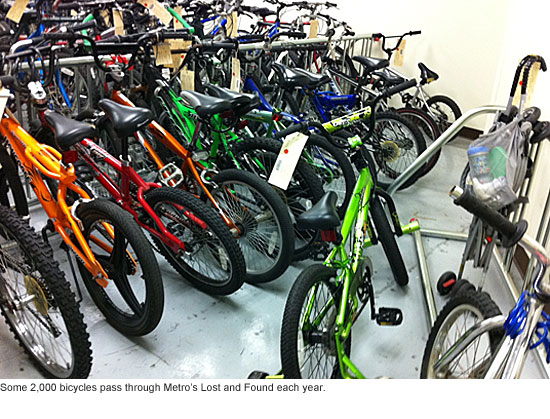 Forgetful transit riders, Lorna Riley has your back—and your backpack.
Forgetful transit riders, Lorna Riley has your back—and your backpack.
Also your keys, mobile phone, mountain bike, prescription medication, “Lilo and Stitch 2” DVD and quite possibly your dry cleaning.
Riley, the doyenne of Metro’s Lost and Found, has seen just about everything in her 13 years with the agency—including a human jawbone (part of a college science experiment), a district attorney’s gang file (quickly returned to its official owner) and a memory stick full of JPL data (ditto.)
“We get it all,” she says.
But this week, Riley’s encountering something that even she’s never seen before: a new computerized system in which a barcode is assigned to each of the thousands of items left aboard Metro trains and buses each year. The items are logged in a computer database, making quick scans for likely matches possible. And the traveling public can now submit online claim forms for missing items. A personal visit to the Lost and Found, located in Metro’s Wilshire/LaBrea Customer Center, is still required to pick up missing things, although Riley will mail items to out-of-towners.
“We’ve shipped stuff back to Australia,” she says. “Being L.A., we get a lot of tourists. France, China, Belize.” Not too long ago, a teenager from Georgia, in town for a Boy Scouts gathering, left his backpack on the bus—fully loaded with all his electronic devices. While he won’t be winning any merit badges for keeping track of his stuff in transit, he did remember to place a luggage tag on the pack, enabling Riley to track down his mom and reunite the scout with his wayward backpack.
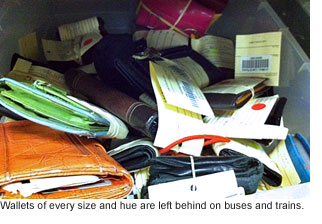 Alan Gee, Metro’s manager of Customer Programs & Services, says he hopes the new system will make that kind of happy outcome more common. As it is, he estimates that up to 50% of bicycles and up to 30% of other items end up being claimed by their owners; he’d like to see that increase to 75% for bikes and 50% for other things. “We don’t want this stuff,” he says. “Come and get it, please!”
Alan Gee, Metro’s manager of Customer Programs & Services, says he hopes the new system will make that kind of happy outcome more common. As it is, he estimates that up to 50% of bicycles and up to 30% of other items end up being claimed by their owners; he’d like to see that increase to 75% for bikes and 50% for other things. “We don’t want this stuff,” he says. “Come and get it, please!”
Tucked away behind the scenes at the bustling Customer Service center, the Lost and Found is a crowded jumble of artifacts abandoned by a metropolis in motion.
Wallets of every color and size are bundled together in a bin. Abandoned shopping bags are grouped according to where they were found. Guitars share shelf space with a forlorn carpet cleaner. An entire room is dedicated to bikes. Forgotten dry cleaning hangs on a garment rack in a hallway.
There are rolls of toilet paper, rolls of blueprints, a tube of toothpaste, a surprising number of crutches and seemingly enough backpacks and suitcases to rival baggage claim at LAX, or at least Burbank.
“Every time I come here, I’m just baffled,” Gee says. “I mean, really?”
The new database doesn’t have the same atmosphere as the Lost and Found itself—in a renovated Miracle Mile building that was once the setting for Tilfords Restaurant and Coffee Shop—but still manages to convey a sense of the varied lives passing through the transit system. Some recent entries: “alcoholics anonymous book and pen,” “1 black wallet with $3.00,” “red framed glasses.”
“We see the full spectrum,” says Riley, 54. “Due to the economy, I think more people are riding public transportation. We get a lot of people, from the homeless to the mayor’s office.”
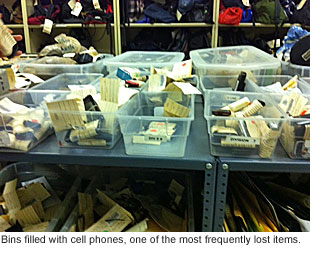 While the new automated system is expected to make it easier to match up missing items with their owners, the human touch is still essential.
While the new automated system is expected to make it easier to match up missing items with their owners, the human touch is still essential.
Earlier this week, Riley, who previously worked in retail and ran her own party events/corporate gift business, patiently met with a steady parade of passengers who’d left something behind on the bus or train.
“We’ll keep a lookout for it,” she told one woman, who was seeking a red Ed Hardy hoodie she’d left on the bus from downtown to the beach. “Give it a couple more days, OK?”
The passenger had lost the pullover a few days ago, and held out scant hope of seeing it again. “I doubt it, but it’s worth a try,” she shrugged before leaving the window.
Sometimes the customers are more frustrated than resigned.
“They’re angry with themselves because they lost it,” Riley says. “Sometimes they’re so upset that it’s hard to tell what they’re looking for. I’m pretty good at calming people down.”
Riley prides herself on being able to find her way to the items she’s logged in using a color-coded system that she developed.
And she knows her repeat customers.
“I have one regular who loses his bike. He lost it three times in one month. He almost uses Metro as public storage.”
She’s even had father-daughter and father-son teams—in which both got off the bus and left their bikes behind.
Items not claimed after 90 days are auctioned off or donated to charity. Still, some things linger longer, like a Barbie tricycle, still in its bright pink box, that was left on a Blue Line train last December and is still waiting for someone (Santa Claus?) to pick it up and deliver to its rightful owner.
When she can, Riley plays gumshoe. “I have a little file that I call research,” she says. By tracking down leads and calling around, she’s been able to locate and return important documents, such as death certificates and burial permits, as well as objects of sentimental value, like wedding photos.
“Usually,” she says, “I go home with a good feeling because I’m helping people get their things back.”
Posted 7/27/11
Party arty in Malibu
July 27, 2011
Fresh art meets ocean air this weekend at the 40th Annual Malibu Arts Festival, where you might discover that perfect piece to complement your home, or simply have a little fun in the sun.
The two-day festival is hosted by the Malibu Chamber of Commerce. It brings together more than 150 painters, sculptors, photographers, and other artists at the Malibu Civic Center to display their finest works under crisp white tents. Two stages of live bands will provide the tunes, and chalk artists will illustrate the beauty of Malibu as visitors watch.
Other attractions include a Kids’ Village, where youngsters can make and take home their own art projects under the guidance of professionals. “Surf cars” will be displayed, local businesses will showcase their wares, and mobile food vendors will be on hand to keep hunger at bay.
New this year, a “Malibu Wine Trail Garden” will be featured in eco-conscious Legacy Park. On Sunday, from 12 p.m. to 5 p.m., local vintners and wineries offer samples for a walking wine tasting–possibly the perfect accompaniment to an outdoor art show.
The Malibu Arts Festival has attracted its share of celebrities over the years. Some, like Jane Seymour, Pierce Brosnan, and Dick Van Dyke, have set up displays as artists in their own right. These days, Van Dyke’s grandson has his own display at the event.
The festival will be held from 10 a.m. to 6 p.m. Saturday, July 30, and Sunday, July 31, at the Malibu Civic Center, 23555 Civic Center Way. VIP parking costs $7, or you can try your luck finding street parking.
Posted 7/27/11
Roots of rock in the Valley
July 27, 2011
Chicano rock and roll has deep roots in Southern California. Tía Chucha’s Centro Cultural & Bookstore in Sylmar displays them this Saturday, July 30, as authors David Reyes & Tom Waldman read from “Land of a Thousand Dances: Chicano Rock ‘n’ Roll from Southern California.”
Their book details the history of the music and the artists behind it, who usually came from inauspicious backgrounds and had no formal musical training. They faced a sometimes-bigoted recording industry that was largely unaware of their existence and reluctant to market them.
Additional discussion will be devoted to the women of the movement. Ersi and Rosella Arvizu from The Sisters will tell stories of their experience with the 1960s rock scene. Ersi will then join rockers El Chicano for a musical performance.
Tia Chucha’s brings literature and art to the Northeast Valley with readings, writing circles, music, community meetings and more. It is located at 13197-A Gladstone Avenue. This free event takes place from 1 p.m. to 3 p.m.
Posted 7/27/11
Government–up close and personal
July 22, 2011
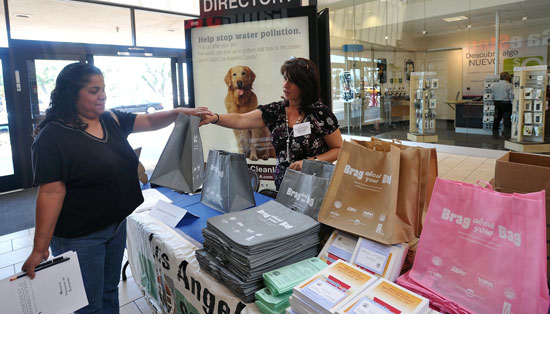 All levels of government head to the East San Fernando Valley this Saturday for “Government Day,” a yearly event where government services and information are brought to the public’s doorstep.
All levels of government head to the East San Fernando Valley this Saturday for “Government Day,” a yearly event where government services and information are brought to the public’s doorstep.
L.A. County Supervisor Zev Yaroslavsky is organizing this year’s event, as he has for the last 15 of them.
“We’ve been hosting Government Day for many years out here, and the best part is the chance to meet constituents and introduce them to their government and the public services available to them,” said Yaroslavsky. “I never get tired of that.”
In addition to Yaroslavsky, City Councilmembers Tony Cardenas and Richard Alarcón, State Senator Alex Padilla, and Congressman Howard Berman are also sending their representatives.
Among the more than 40 agencies setting up tables this year:
- Los Angeles County Department of Public Social Services
- Los Angeles County Registrar-Recorder/County Clerk
- Los Angeles County Office of the Assessor
- Los Angeles County Department of Consumer Affairs
- Los Angeles County Department of Human Resources
- Los Angeles Mission Community College
- California State Department of Insurance
- Los Angeles City Department of Building and Safety
Agencies will provide valuable information, giveaways and services. Sign up for CalFresh (formerly Food Stamps), register to vote, and more.
The event takes place Saturday, July 23 from 10 a.m. to 2 p.m. at Panorama Mall, 8401 Van Nuys Boulevard. Get there with the Los Angeles Metropolitan Transit Authority, which will also be in attendance.
Posted 7/22/11




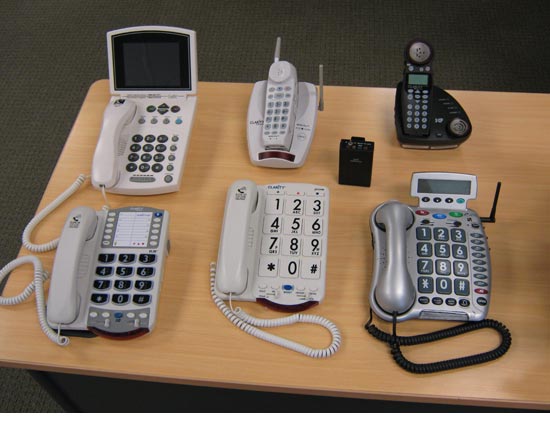
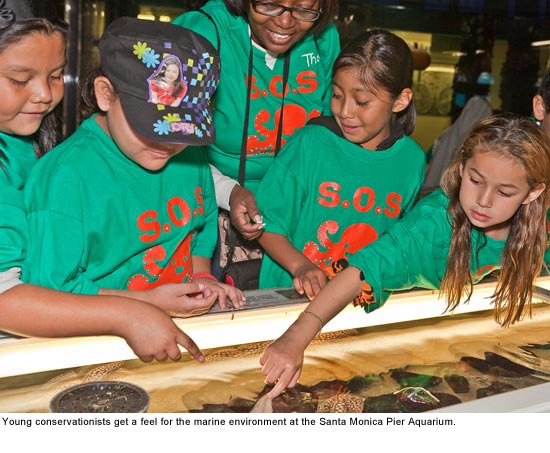
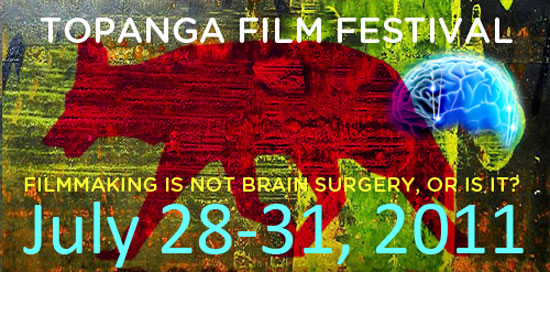
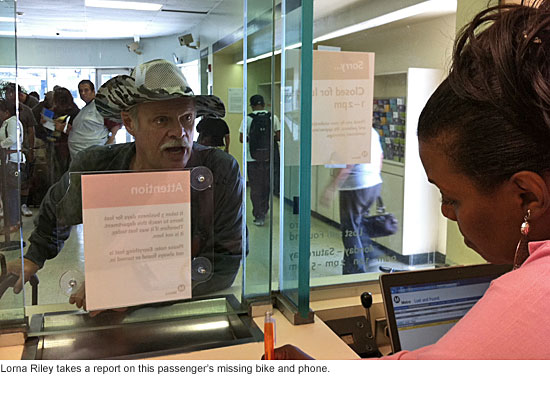
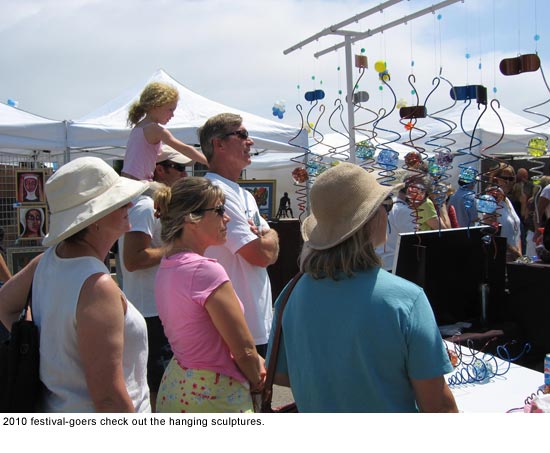
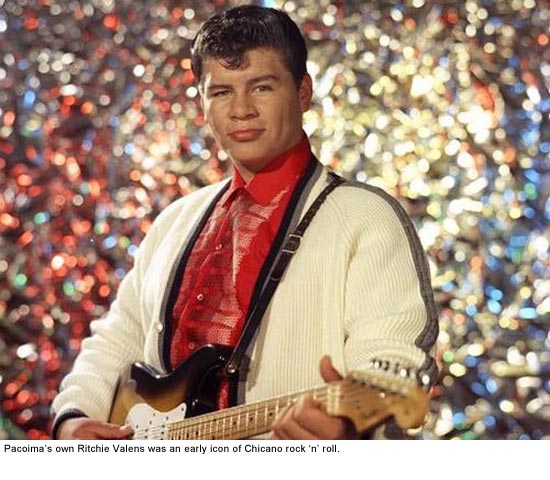





 Check for the latest closure information
Check for the latest closure information








